Understanding Your Consumer’s Journey Using Search Science for Keyword Research was originally published on BruceClay.com, home of expert search engine optimization tips.
Our speaker for this SMX West mini-session titled “Understanding Your Consumer’s Journey – Using Search Science for Keyword Research” is Tony Verre, founder of DreamFire Digital Marketing (@TonyVerre).
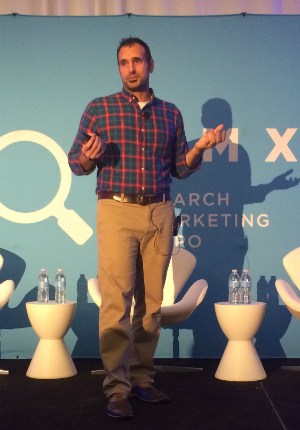
Tony Verre speaking at SMX West
He opens with a question: Does anyone here use consumer surveys as a major data point when creating your strategies? You can only believe half of what you hear and read. Accept that consumer surveys don’t always tell the truth.
Here are examples:
- Wal-Mart decluttered its shelves based on feedback from consumer surveys. They lost 1.85 billion dollars.
- Coca Cola, in response to the Pepsi Challenge, spent $4 million in a nationwide taste test to create NEW Coke. That was a bust.
- McDonald’s spent $300 million to create the Arch Deluxe in response to consumer feedback for an “adult burger,” which they retired as a failure a year later.
From 50 to 84 percent of consumers don’t provide honest responses about their behaviors in marketing surveys. Why? Three reasons:
- They want to sound superior to the guy or girl next to them.
- They want to fit into the social norm.
- They are too polite and won’t tell you your idea sucks.
So if we can’t trust consumers, who can we trust? SEARCH ENGINES! No one is going to lie to a search engine. You don’t type “jeans” into the search box if you’re looking for running shorts.
Amazon and Google are two powerhouses of consumer search behavior data. We can unlock this data. Get inside consumers’ heads using observable and quantifiable data to figure out the consumers’ needs and wants.
4 Tools of the Search Scientist Trade
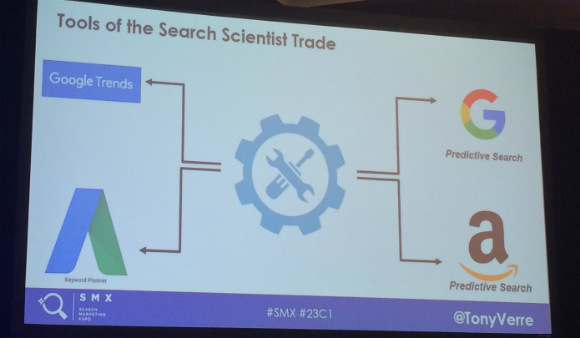
Phases of the consumer search journey:
Using Google Trends
This tool tells us where something has been and where it’s going. Use a three- to five-year window to see a full business cycle to examine consumer search trends. Top-level trends can be misleading; compare terms to the category for a true sense of what search terms are driving the category.
For example, if we turn on the Compare to category option for terms “shampoo” and “conditioner,” we see that conditioner drives the category, and not shampoo, which appeared to be the trend driver before we accounted for category.
Get to know the category. Look at topics, queries and geographical centers that are driving the product category. Catalog, screenshot and save for later.
Using Google Predictive Search
Using the predictive search suggestions (aka Google instant results) is like using Google’s crystal ball, and it tells us what consumers are looking for around a term. Start typing a head term keyword in to a search box and see what other related searches and predictive searches are suggested. Screen shot, catalog, rinse and repeat.
Using Google Keyword Planner
This is where we get into the meat and potatoes. He calls it “boiling the ocean of keywords.”
- Enter head terms, top phrases and predictive terms using the closest category possible.
- Review, examine and add as many Keyword Planner groups to your plan as you can.
- Download to Excel and prepare to start boiling the ocean.
Tip: Concentrate on just one product or service at a time.
Next you start sifting and refining the salt. You start bucketing how consumers are searching. This takes a long time, like 25 hours the first time Verre did it. Now he can do a similar category in four to six hours because he can recognize patterns.
Using Amazon Predictive Search
If 44 percent start their searches on Amazon, you’re talking about a buy-now platform. You don’t have to do informational searches. You can use the same terms on Google. Amazon’s predictive search tool is a doorway to understanding what unbranded terms trigger purchase. You find that consumers search Google and Amazon in a similar fashion, and so you should get confirmation that you’re on the same track. Catalog and screen shot away.
Synthesizing Consumer Needs & Behaviors
Don’t walk into your boss’s office with data and Excel spreadsheets. The next step is making the data understandable. He puts up the slide below that shows taking all the spreadsheets, graphs and screenshots and turning them into something presentable, with colorful pie charts, pictures of faces, colored labels, etc.
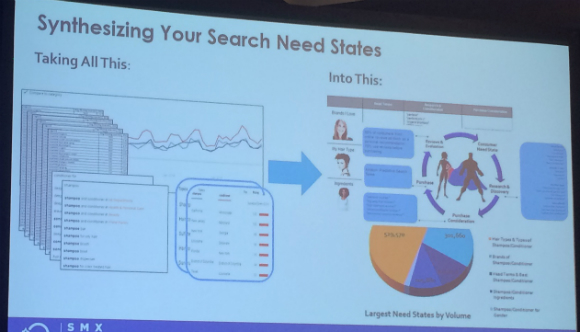
Make a deck that fills out the consumer journey based on search science and tools, not unreliable consumer surveys. Take data and paint a picture.
It’s more than on-page strategy that you’re shaping; it’s digital marketing.
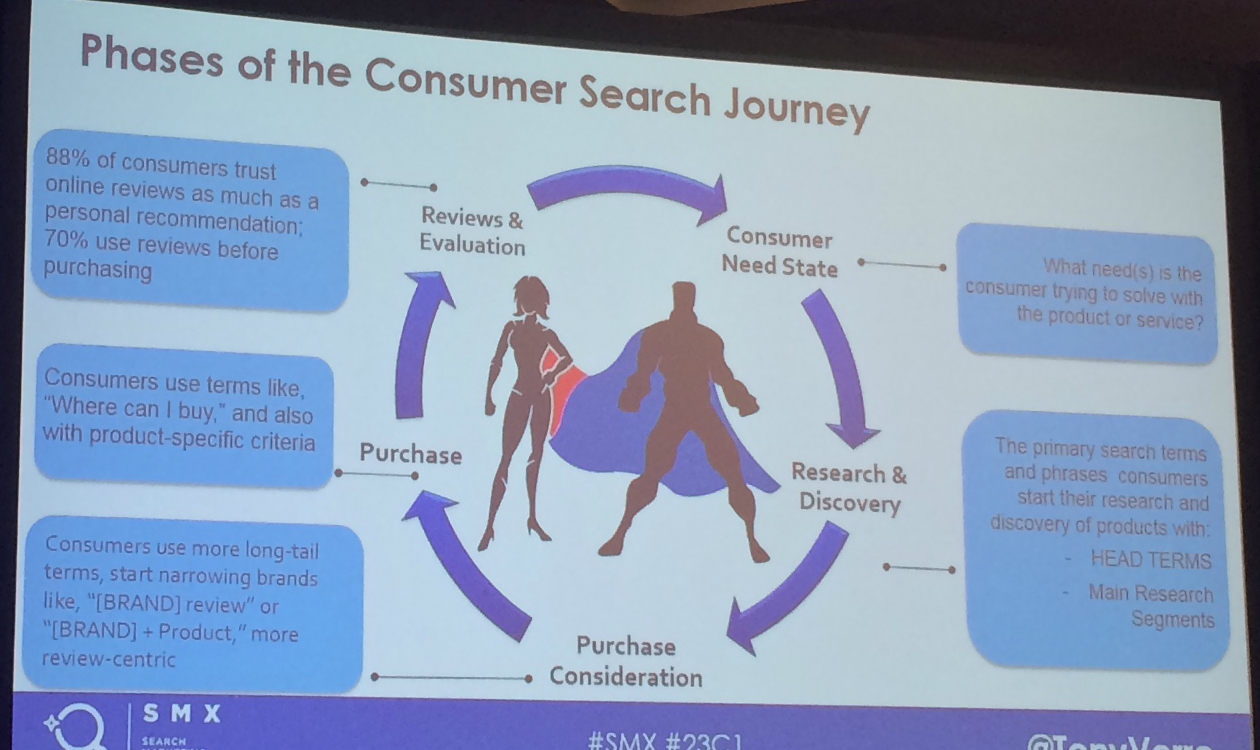
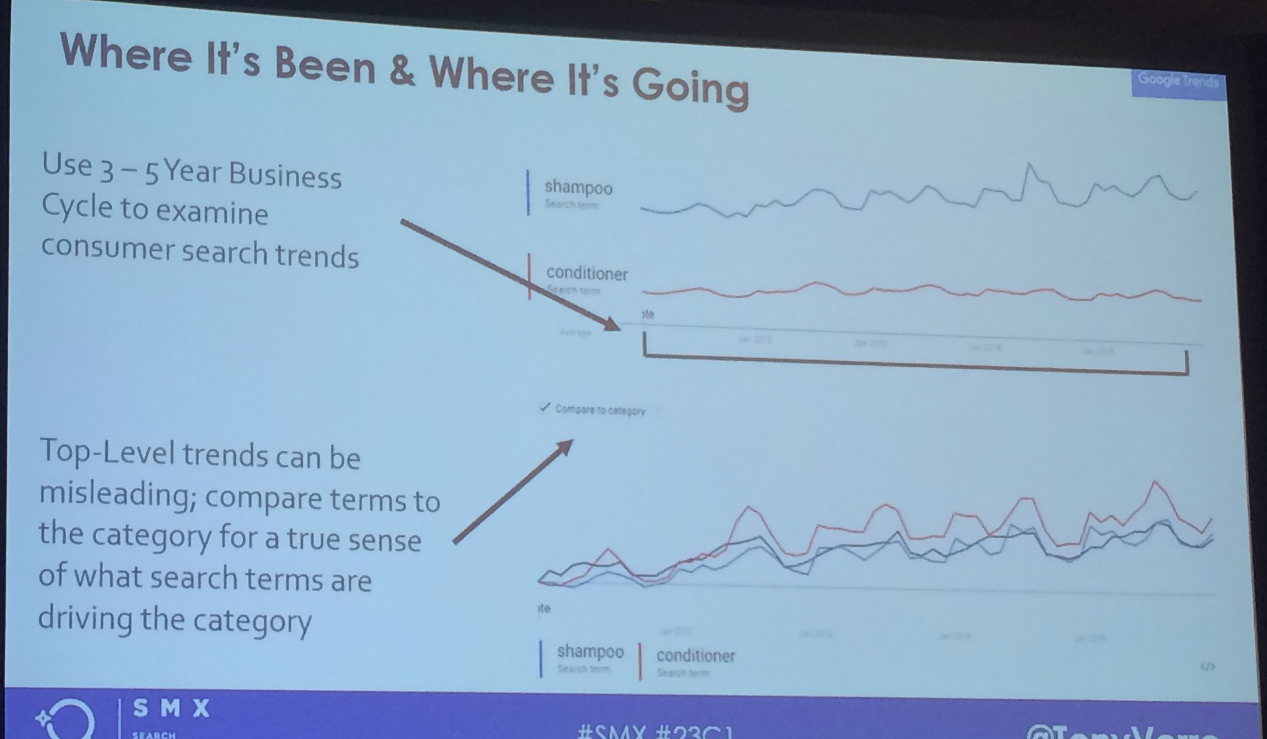
No comments:
Post a Comment